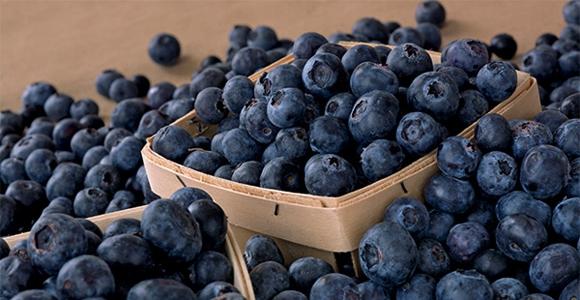Most rabbiteye blueberry varieties require 400 chill hours to 600 chill hours (hours below 45 F) to break dormancy. Until the cold requirement is achieved, an extended period of warm weather usually will not cause floral budbreak. Once the chilling hour requirement has been satisfied, extended periods of warm temperatures will initiate flower bud growth. Susceptibility to cold damage in rabbiteye blueberry is directly related to the stage of floral development. As flower development progresses, susceptibility to damage becomes greater. Swollen, unopened flower buds can withstand temperatures as low as 21 F. Buds in which bud scales have abscised and individual flowers are distinguishable are killed at 25 F. Flowers distinctly separated with corollas unexpanded and closed are killed at 28 F. Fully opened flowers are damaged at 29 F and fruit are severely damaged at 30 F.
Certain varieties seem to be more cold tolerant than others due to the extent of floral development achieved when a killing freeze occurs. Earlier blooming varieties are more prone to freeze injury because they will have the greatest number of advanced blooms.
The common method of determining if buds have been damaged by frost is to cut through the bud several hours after a freeze and look for browning that indicates injured tissue. Sometimes the freeze injury is not severe enough to kill the fruit or flower completely but may affect some individual part, such as the pistil, stamen or seeds, which may result in a reduction in fruit set or size. Blueberry fruit can develop and mature after a portion of the ovaries are damaged; however, because fruit size is highly correlated with seed number, fruits from seed-damaged flowers are usually smaller and often misshapen.
Freeze damage is also the cause of outward scarring on the fruit, which results in reduced quality. The area of the fruit exposed to cold temperatures will desiccate, resulting in a brown necrotic ring around the calyx. Because this tissue is dead or dry, it is more brittle than surrounding tissue and may be the site of splitting during a wet harvest. At best, it will cause a discolored ring and possibly some disfigurement of the fruit. At worst, freeze injury can promote secondary fungal infections that can spread to and destroy healthy blooms.
Methods of Protecting Blueberry Crops from Frost and Freeze
Freeze protection of blueberry fields is not an exact science. It is difficult to make recommendations about freeze protection because every freeze event is different. Factors that affect the efficacy of freeze protection include:
- Weather conditions
- Wind
- Temperature before the freeze
- Length of freeze period
- Growth stage of the plant
Floating row covers are especially useful for small acreages of low-growing crops or when water for overhead irrigation is not available. The amount of frost protection obtained varies with the weight and fiber arrangement of the row cover. Usually the amount of protection increases with the weight, though differences in texture make this correlation less than perfect. Row covers weighing 0.6 ounces per square yard typically can give 2 or 3 degrees protection during a radiational freeze, while nursery foam covers or a double layer of row covers can give more than10 degrees of protection. Weather conditions before the frost affect the amount of protection obtained from row covers because little or no heat may accumulate under the row cover on cloudy windy days. When row covers are used for frost protection, they should be pulled over the crop during midafternoon to allow heating to take place. Row covers also can be used in conjunction with sprinkler irrigation on top of the row cover. Row covers used in this way typically cut the amount of overhead irrigation needed for frost protection by about 50 percen,t on average.
Wind machines have been used successfully to protect tender blueberry blooms. Most devastating spring freezes are radiational freezes, and wind machines are effective in this type of freeze. In a radiational freeze, there is no wind and the heat at ground level is lost to the atmosphere. A wind machine causes air turbulence that disrupts the inversion layer by intermixing warm and cold air. Often an inversion layer of warm air is 50 feet to 200 feet above the surface and, if one is readily available, a wind machine will pull down this warm layer and mix it with the air in the field. Growers sometimes use helicopters to gain the same effect. A helicopter will find the inversion layer, push down the warm air and mix it with colder surface air. The air currents mix the air and prevent the escape of the warm air back into the atmosphere.
Overhead water sprinkling is another effective method of frost protection. However, it is somewhat expensive to install and requires a large volume of water. Water volume is critical! It is necessary to apply 1/2 inch to 1 inch of water per hour and at least one sprinkler rotation per minute. Water must be applied constantly because ice is a poor insulator. Protection comes from the constant application of liquid water, which is above 32 degrees F, and the release of heat when water turns to ice. This keeps the plant tissue at or above 31.5 degrees F. The water must be applied constantly until the air temperature rises above 32 degrees F. If the water is turned off too soon, the entire crop may be lost.
Reference:
Braswell, John. Establishment and Maintenance of Blueberries. 2009. Retrieved 01 June 2010.
